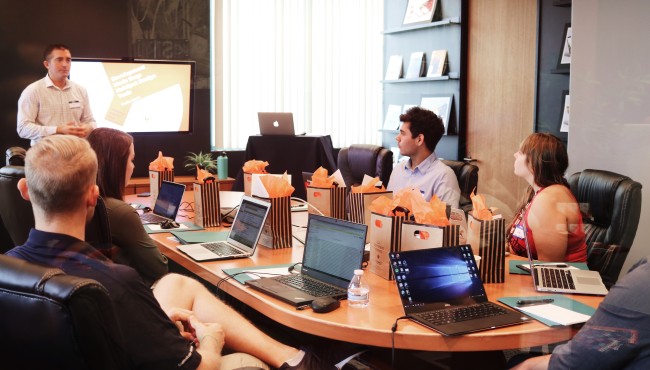
The recovery procedure of a company with difficulties is a business restructuration process known in France as “redressement judiciaire”.
Unlike the procedure of safeguard, the company has effectively ceased its payments, but it still seems possible to retake the company and relaunch its activity. The procedure is indeed very similar to the safeguard one, and it also applies to any type of enterprise.
Who is involved in the procedure?
The people who intervene in a company recovery project is the same as in the case of a safeguard procedure, namely a designated judge, an attorney, and an administrator. However, the director of the enterprise may not intervene in the process.
An attorney appointed by the judge will carry out the process. He’s in charge of watching its evolution and making sure that the company pays its debt in a 10 years maximum period.
Other legal professionals are added to the procedure, especially in case the revenues are too big (at least three million of euros), as well as in case of having more than 20 employees. These professionals are, for example, an auctioneer, or a bailiff. Unlike the safeguard procedure, in the recovery process it is compulsory to appoint them.
With regards to the opening of the process, it can be requested by:
- The debtor (director of the company) himself. He can ask it when the company is no longer able to pay its debts, but bearing in mind that he mustn’t exceed a period of 45 days to request it.
- A creditor who is not getting paid. If a creditor demands a “redressement judiciaire”, a hearing will be held and both parties will be heard. The company will have to explain the reason of the debt, and also provide proofs that it’s solvent if that’s its case. The judge will in fact appoint both parties in a period of 10 days after the request was made.
- A public prosecutor.
Once the request for a recovery procedure has been approved, the tribunal will examine the debts of the company to make sure that there’s a possibility of relaunching the activity. If its future seems insurmountable, a liquidation process for insolvent companies will be open instead.
Particularities of the recovery procedure
In the case of a recovery process, differing from the safeguard, the AGS (insurance for the guarantee of salaries) intervenes to make sure that the employees’ rights are respected.
The company becomes immediately available for transfer to any third party interested in retaking it and relaunching the activity if they can better the offer of the current managers. Additionally, it’s the judge who will determine the salaries of the director and his associates, or anyone involved in the management of the company.
Unlike in the safeguard process, during the “redressement judiciaire” it’s the experts appointed by the judge who will elaborate the inventory of the belongings of the company, not the enterprise itself.
During the recovery procedure, the past debts of the company are also put aside and a “new” accountancy is established to allow the business to function again. These debts will be included afterwards in the recovery plan. However, exceptionally urgent payments will have to be paid immediately.
During the recovery procedure, all the legal ways to individually prosecute the enterprise are blocked, meaning that the creditors cannot demand their benefits.
The phases of the recovery procedure
An enterprise requesting or being demanded a recovery process has to provide a dossier to the registry of the Commercial Court that reflects its exact accountancy situation so that they estimate its chances to survive once the recovery plan is over. If it’s thought to be able to overcome its insolvency situation, then the procedure is opened.
After pronouncing the opening of the process, the attorney verifies the debts and makes a publication in the Bodacc. The creditors can then make their claims in a 10 days period after the publication if they disagree. After this period, the company is put on an observation plan, where the attorney determines the payment deadlines for these debts in a maximum of 10 years.
It’s important to note, however, that the creditors have two choices as of how to claim their debts:
- Either part of the debts are paid immediately or,
- They receive the totality of the due amount in the course of the recovery plan.
As mentioned before, during the observation phase, the company cannot be prosecuted by the creditors, and the interests cannot be increased. The phase lasts for 6 months initially and it’s renewable two times, going for a maximum of 18 months.
The objective of the observation plan is to evaluate the past situation of the enterprise with regards to its debts and the reasons that led to ceasing the payments to the creditors, its current situation and its capability to recover, planning the future of the enterprise so that it doesn’t become insolvent again, and ultimately, remake a whole new treasury of the company.
End of the procedure
The procedure is over once the company has liquidated all of its debts at the end of the 10 years period. If its activity revenues allow it, the debts can be paid earlier.
On the other hand, if the enterprise cannot face the payments, the recovery process will be finished and a liquidation procedure will be opened instead to finish the activity of the company.